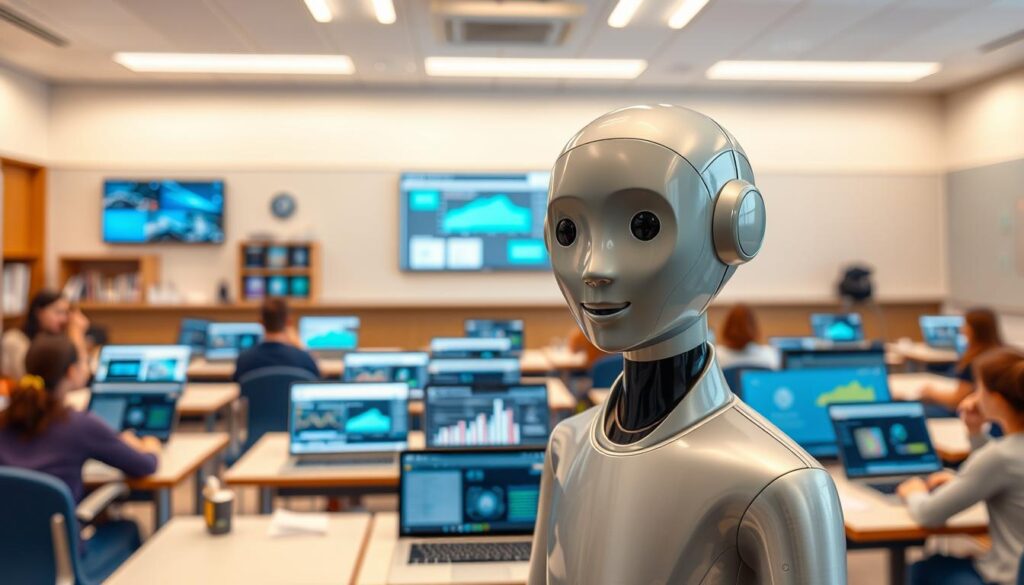How AI is Improving Healthcare Analytics
Stop for a moment and think about the mountains of medical data out there—patient charts, diagnostic scans, prescription records, wearable device outputs, and more. Overwhelming, right? Now, imagine having a super-intelligent assistant sorting through all that, making sense of it, and serving up insights in real time. That’s exactly what artificial intelligence is doing in healthcare analytics today.
We’re talking about faster diagnoses, smarter predictions, and tailored treatments all made possible by machines that learn. And not in some futuristic sci-fi scenario—it’s happening right now, quietly but powerfully. Whether you’re walking into a local clinic or a sprawling metropolitan hospital, AI is humming away behind the scenes, transforming raw numbers and text into actionable medical intelligence.
Think of it this way: AI is the difference between a doctor reading one patient file and a doctor consulting a library of 10 million cases in seconds. It bridges gaps, exposes hidden patterns, and equips healthcare professionals to make decisions with unprecedented confidence. From predicting disease outbreaks to optimizing hospital workflows, AI is not replacing healthcare workers—it’s elevating them. And that’s just the tip of the iceberg.

Introduction to AI in Healthcare
Understanding Healthcare Analytics
Healthcare analytics is essentially the art and science of extracting wisdom from vast datasets. But let’s not sugarcoat it—it’s complicated. Electronic health records, patient demographics, laboratory results, even data from fitness trackers—all these streams need to be analyzed and understood. Traditionally, this was manual, slow, and prone to oversight. AI flips the script.
With algorithms that learn and adapt, healthcare analytics becomes a dynamic process. Machine learning models can detect correlations human eyes would never catch. For instance, patterns linking genetic markers to disease progression or subtle symptoms that precede critical events. The complexity AI can handle? Astonishing. The speed? Blazing. And accuracy? Improving every day.
What does this mean for you and me? Faster test results, better treatment options, and less guesswork in diagnoses. It’s like replacing an old, flickering flashlight with a high-powered spotlight that reveals everything clearly.
The Role of AI in Modern Healthcare
Gone are the days when AI in healthcare was just about robotic surgeries or sci-fi speculation. Today, it’s in virtual health assistants answering queries at 2 a.m., in predictive algorithms suggesting adjustments to patient treatment plans, and in systems monitoring ICU patients for any signs of distress before a nurse even notices.
Machine learning is at the heart of it all. These systems aren’t static; they evolve, learn from new data, and get sharper over time. Think of them as tireless digital consultants—never distracted, never fatigued, constantly vigilant. They are helping clinicians forecast health outcomes, identify at-risk patients, and even anticipate supply chain needs for medical equipment.
The impact is massive: reduced hospital readmissions, fewer diagnostic errors, and more personalized patient care. Healthcare is no longer just reactive—it’s predictive, preventative, and smarter, all thanks to AI.

Predictive Analytics in Healthcare
Early Detection and Disease Prevention
Imagine receiving a notification on your phone telling you there’s a 70% chance you’ll develop Type 2 diabetes within the next year unless you change your habits. That’s predictive analytics at work. AI systems can now comb through data from your wearable devices, family history, diet patterns, and genetic information to sound the alarm before disaster strikes.
Hospitals are already using this capability to monitor patients in critical care units. When subtle changes in vitals hint at complications, alerts go off, and doctors can intervene early. In public health, predictive analytics helps identify potential outbreaks based on travel patterns and hospital reports—stopping disease in its tracks.
It’s not about crystal balls; it’s about data. And AI’s ability to process it faster and more intelligently than any human could. Prevention, after all, is the best medicine—and AI makes it proactive instead of reactive.
Personalized Treatment Plans
Healthcare used to mean standardized protocols. But let’s be real: no two patients are alike. AI-driven analytics turns generic care into bespoke solutions. Imagine treatments designed around your specific DNA, lifestyle, and health history. That’s no longer a fantasy—it’s the new normal.
Doctors now consult AI tools trained on millions of case studies to recommend treatments that have the highest chance of success for each individual. For chronic conditions like hypertension or asthma, AI predicts flare-ups and guides adjustments to medications or routines. The result? Health plans that feel as though they were custom-tailored just for you—because they are.
Personalized care has become the gold standard, and AI is the master tailor behind the scenes.

Real-Time Decision-Making with AI
Emergency Response Systems
Picture an ambulance on its way to a hospital. The paramedics are tending to a patient, but at the same time, AI is running calculations, predicting outcomes, and sending real-time data to the hospital. Doctors and nurses are already prepping based on those insights before the patient even arrives. That’s how powerful AI-enhanced emergency response has become.
AI algorithms are integrated into emergency protocols, helping responders determine the severity of injuries, potential complications, and even the fastest route based on live traffic data. This isn’t just convenience—it’s life-saving efficiency.
Hospital Resource Optimization
Every hospital administrator knows the struggle: balancing beds, equipment, and medical staff against unpredictable patient inflows. AI makes this juggling act smarter. It looks at historical admission data, real-time trends, and even external factors like local flu outbreaks to suggest optimal resource allocation.
For example, during the height of the COVID-19 pandemic, AI was used to forecast ICU capacity needs weeks in advance, helping healthcare systems prepare accordingly. Today, it’s helping to minimize waste, streamline operations, and reduce stress on staff, ultimately translating to better care for patients.
Enhancing Medical Imaging and Diagnostics
AI in Radiology and Imaging
A single MRI scan can contain thousands of images. Even the most experienced radiologist can overlook tiny details, especially under pressure. Enter AI. Systems trained on millions of radiological images can now highlight potential abnormalities—tumors, fractures, blockages—with near superhuman accuracy.
This not only speeds up diagnoses but also adds a layer of certainty. Radiologists can focus on interpreting flagged areas, reducing error rates and increasing diagnostic confidence. For patients, this means quicker results and treatment that starts sooner rather than later.